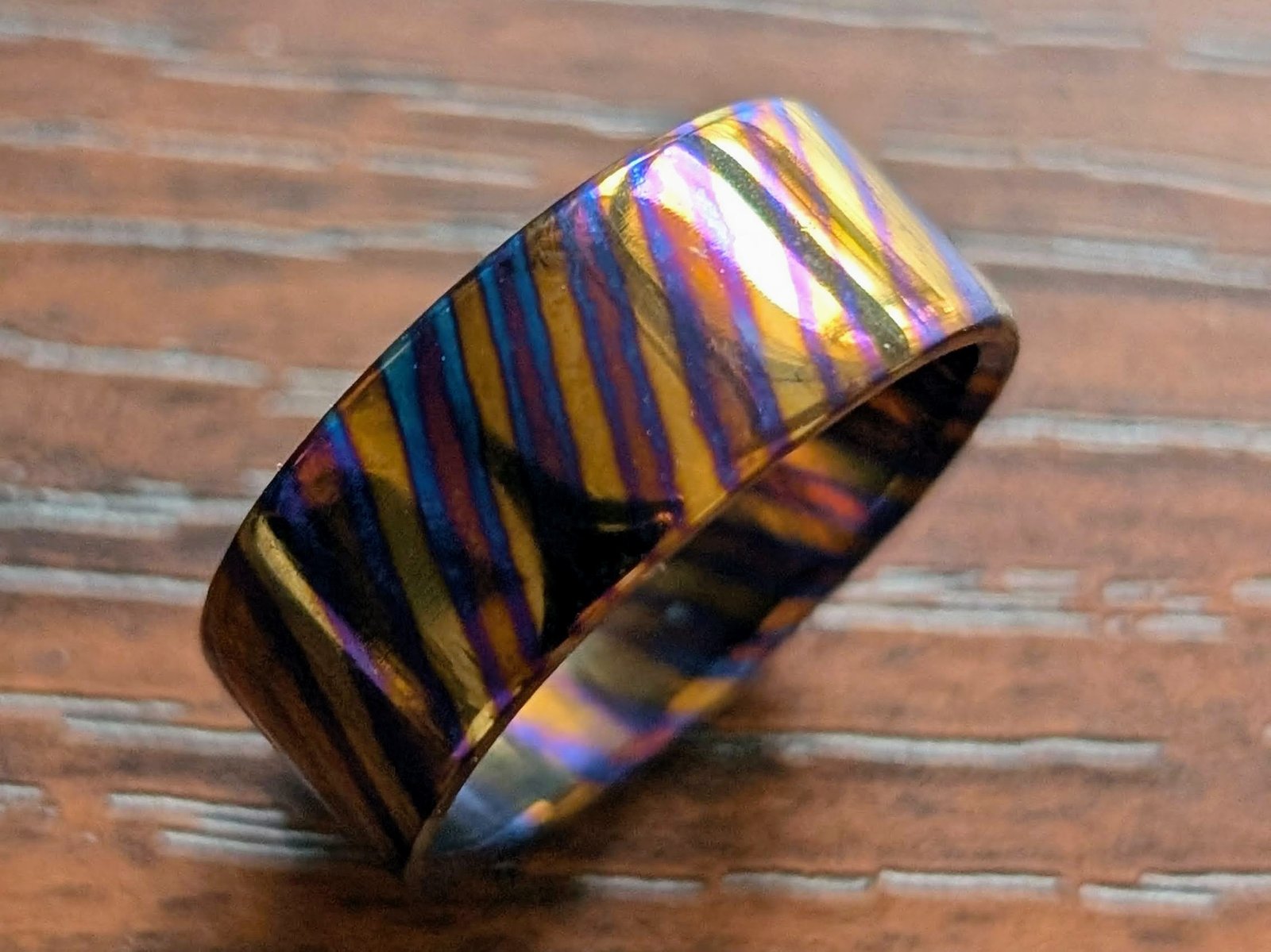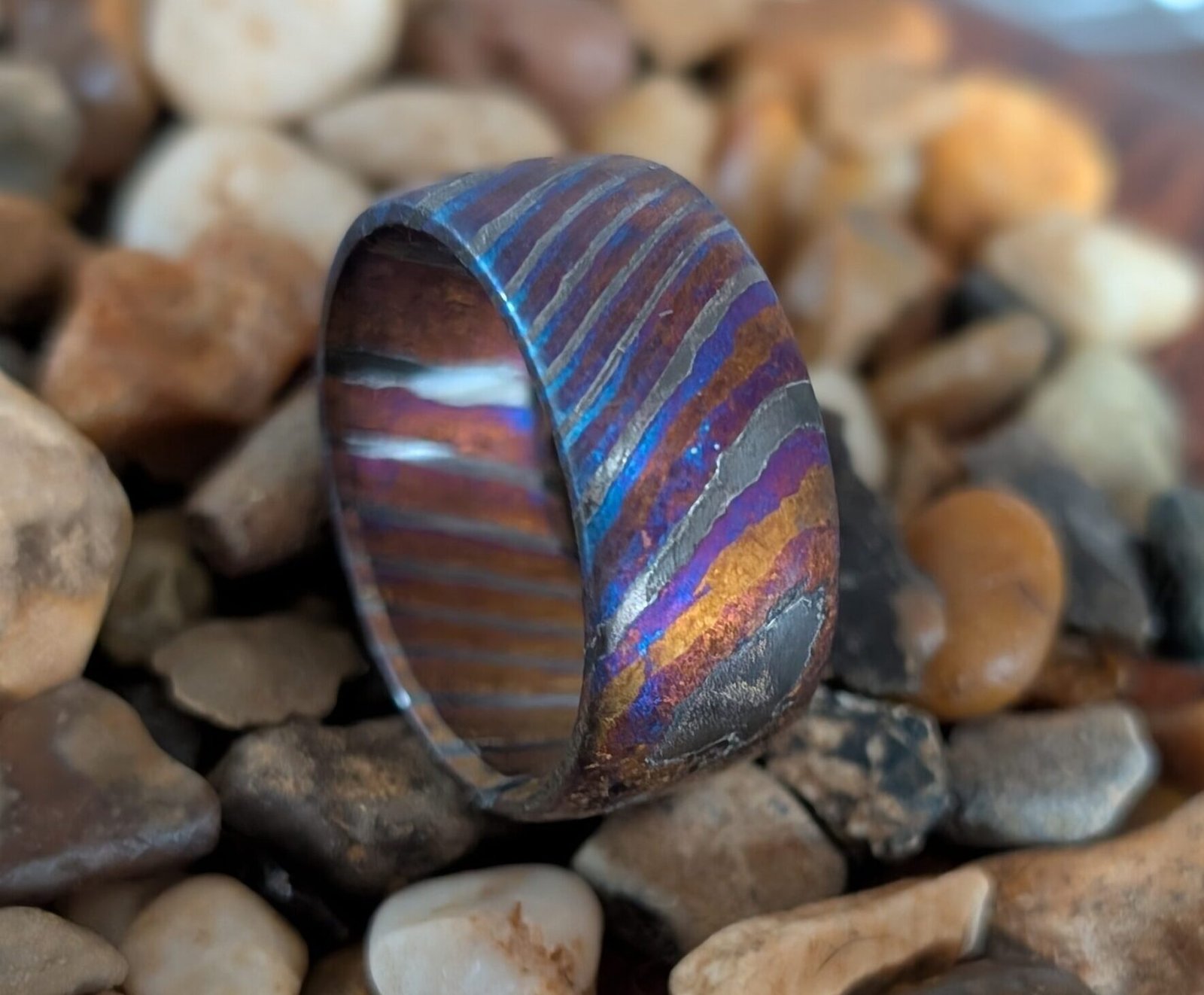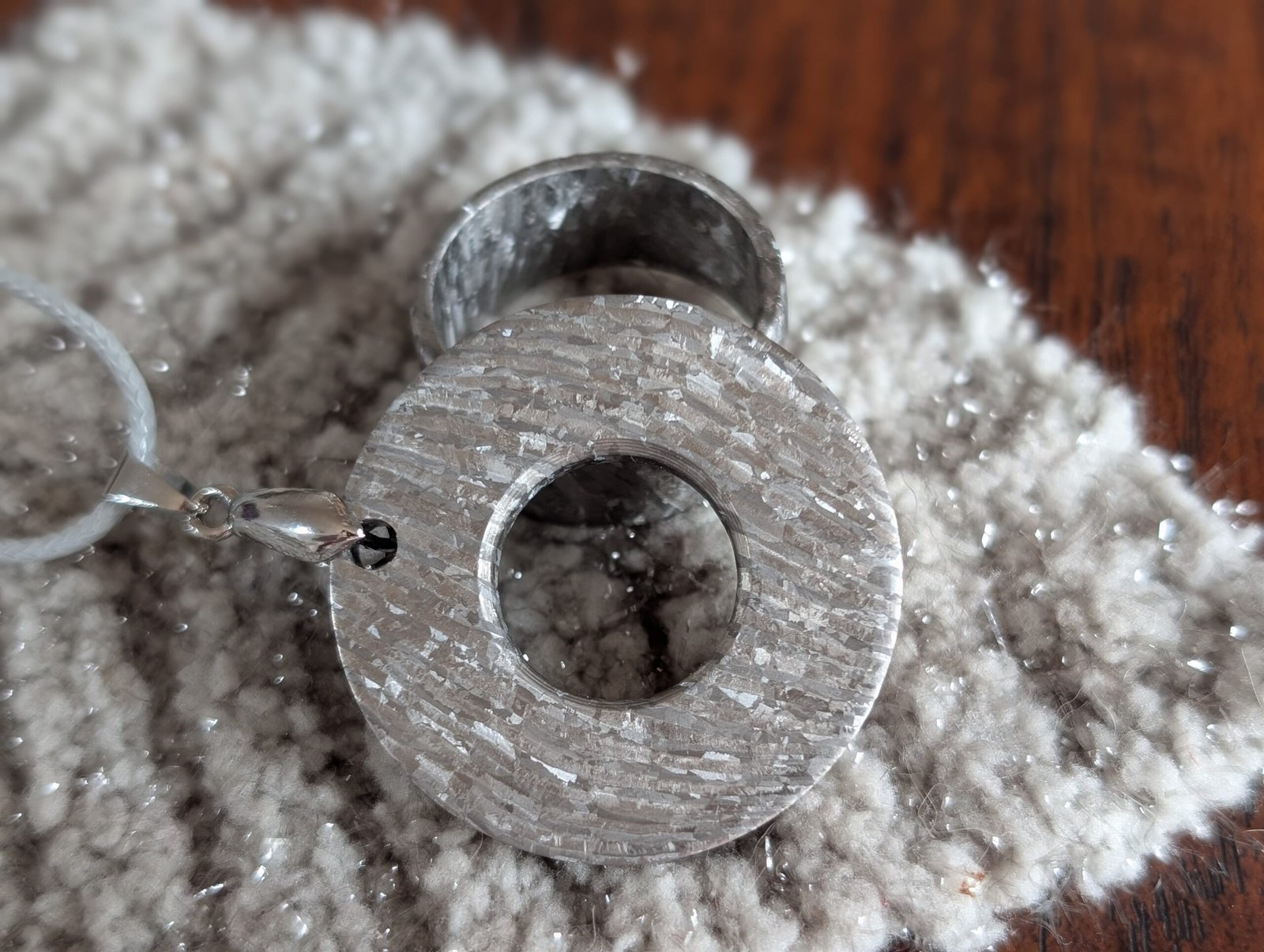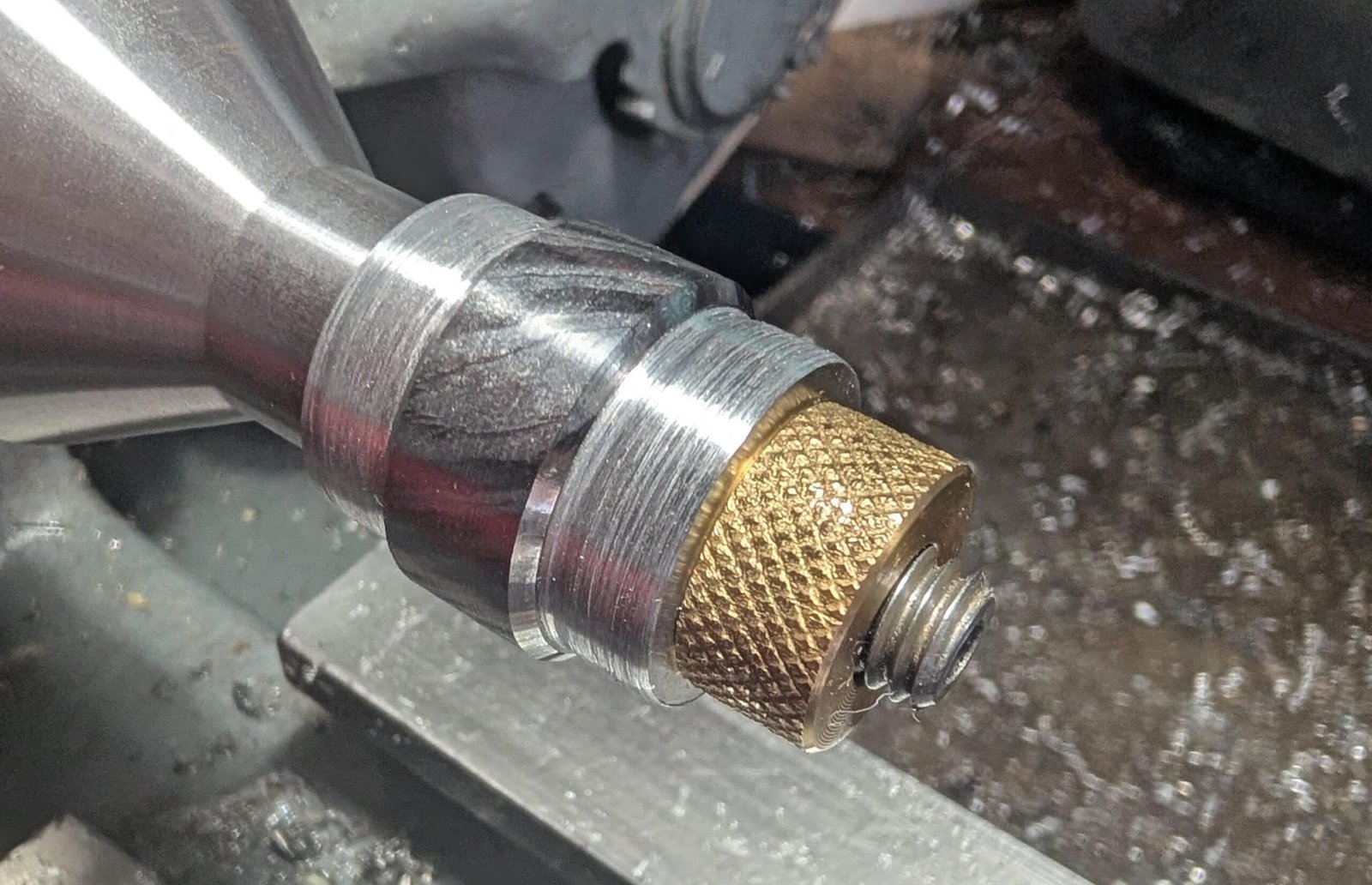Materials
I make contemporary jewellery from advanced, patterned metals. Below you’ll find a guide to what they are, how they’re made, and why the effort shows in the beauty and longevity of the finished pieces.

Titanium Damascus (Timascus)
Cleaned plates are stacked into a billet, sealed from oxygen in a vacuum or inert gas, and heated to bond the layers by diffusion. The bonded stack is then forged, drawn and patterned—twisted, laddered or drilled and restacked—before being squared back into workable bar stock. I machine each piece of jewellery from a solid bar of this material. After turning and sizing, the surface is prepared, etched, and then heat‑coloured or electro‑anodised. Titanium forms a transparent oxide film whose thickness controls colour by light interference. Different alloys in the stack grow oxide at different rates, giving rich, multi‑hued patterns without dyes or plating.What it is
Timascus is a layered combination of titanium alloys. It typically combines commercially pure titanium with aerospace grades such as 6Al‑4V to create contrast.How it’s made
Why it shines in the finished piece

Zirconium / Titanium Damascus (ZircuTi)
Much like Timascus, cleaned sheets of titanium and zirconium are diffusion‑bonded into a billet, then forged and patterned. Zirconium requires careful handling—it can burn when hot in the presence of oxygen—so the bonding and forging are done in controlled conditions by specialist mills. After I turn the ring and refine the profile, heat treatment or electro-anodising changes the zirconium layers while the titanium layers are anodised to a rainbow of potential hues. The oxides are both integral and highly wear‑resistant, so the contrast persists in daily wear.What it is
ZircuTi combines layers of titanium with zirconium. When finished, titanium can show vivid interference colours while zirconium either stays silvery or develops a deep graphite‑black ceramic‑like oxide. The contrast is dramatic and architectural.How it’s made
Why it shines in the finished piece

Crystallised Titanium Damascus
Starting with layered titanium damascus, the surface is prepared and then carefully driven through a sequence of thermal and chemical steps. These steps encourage nano‑ to micro‑scale crystal growth in the oxide layer. The texture is microscopic and silky to the touch, but it scatters light beautifully across the pattern. I machine, pattern‑expose and finish the ring first and then either leave it in the 'raw' state - which some customers just love - or coloured by heat or electro-anodising. The piece is then sealed and gently brought to a final lustre that balances sparkle with visibility of the underlying layers.What it is
A patterned titanium damascus billet that has been further treated to develop a fine, micro‑crystalline surface—sometimes nicknamed “crystal Ti” for its subtle, frosted sparkle when it catches the light.How it’s made
Why it shines in the finished piece

From billet to ring: where the effort shows
Pattern‑welded metals demand care at every stage. I source billets from specialist UK and international makers, then do the rest in‑house: precision turning and boring on the lathe, profile shaping, comfort‑fit interior, hand finishing and controlled colouring. This slow, meticulous process reveals the best in the material and ensures the beauty you see on day one is built into the ring—not applied to it.
- Precision machining: accurate sizing and true concentricity for comfort and balance.
- Selective finishing: matte, satin, brushed or mirror to suit the pattern and purpose.
- Thoughtful edges: eased and polished so the ring feels as good as it looks.
- Optional engraving: custom inside engraving; laser‑engraved motifs available.

Care & everyday use
- Avoid abrasive polishes as they can remove the oxide layer that gives timascus its colours.
- Oils from the skin can dull the shine. This is not a tarnish or a chemical reaction as might be the case with other metals and it's easily reversed. It's just that the skin oils can interfere with the light-scattering properties of the titanium oxide layer that make us see those lovely colours. If you notice this happening, all that is needed to bring the shine back is a good wash with hot soapy water followed by a degreasing agent such as glass cleaning spray, acetone (nail polish remover) or isopropyl alcohol applied with a soft microfibre cloth. It is recommended to do this regularly to keep the jewellery looking its best.
- If the finish becomes heavily scratched or damaged, I offer a refinishing service should you ever want it.
- As with any fine jewellery, remove during heavy, gritty work to preserve the finish.
